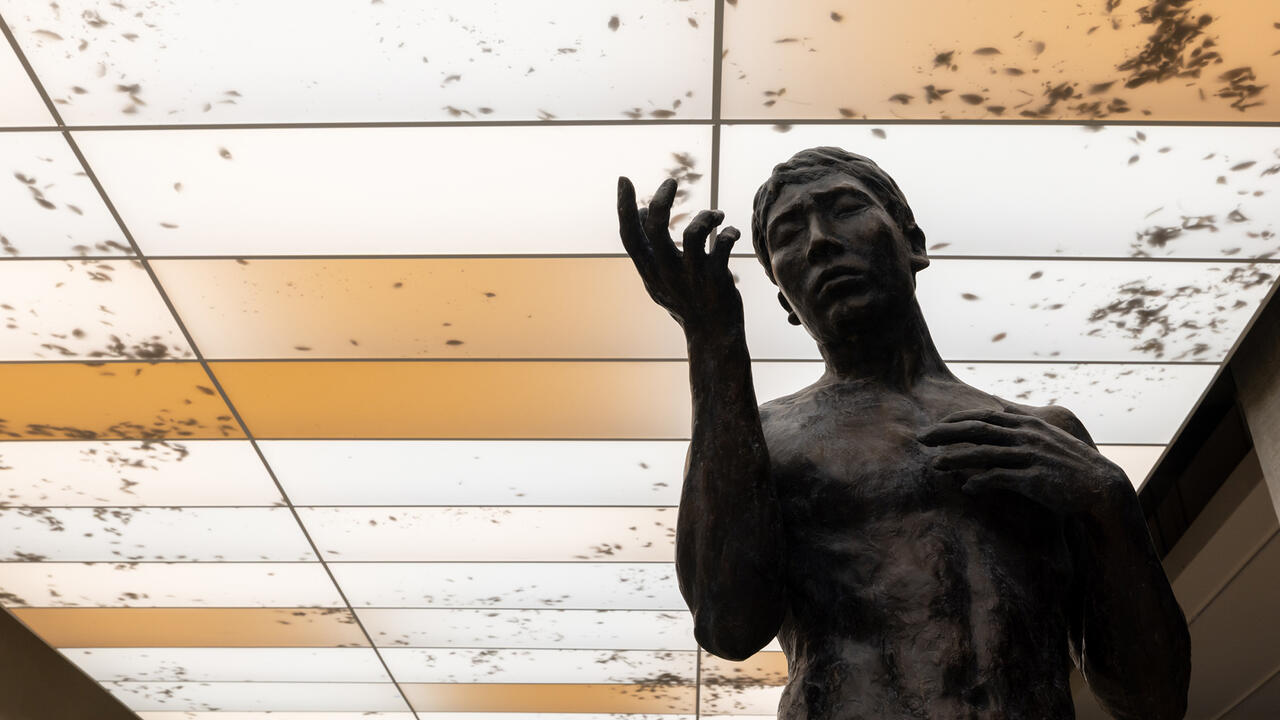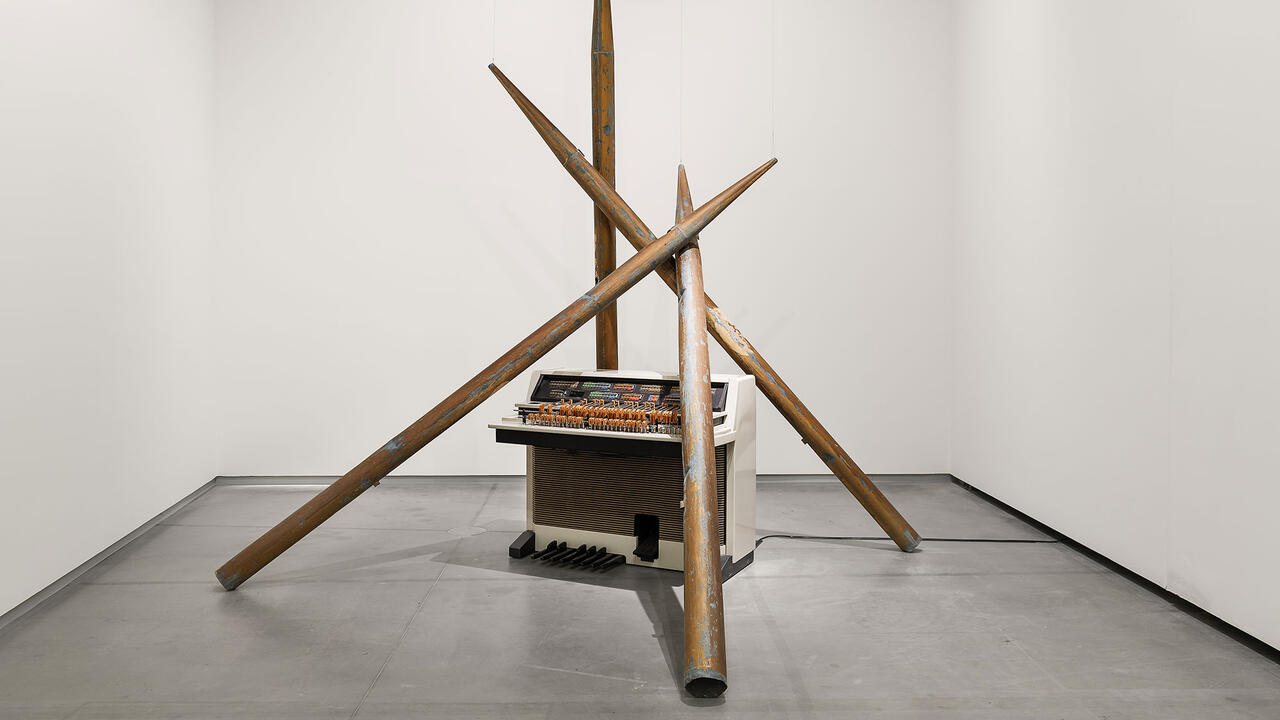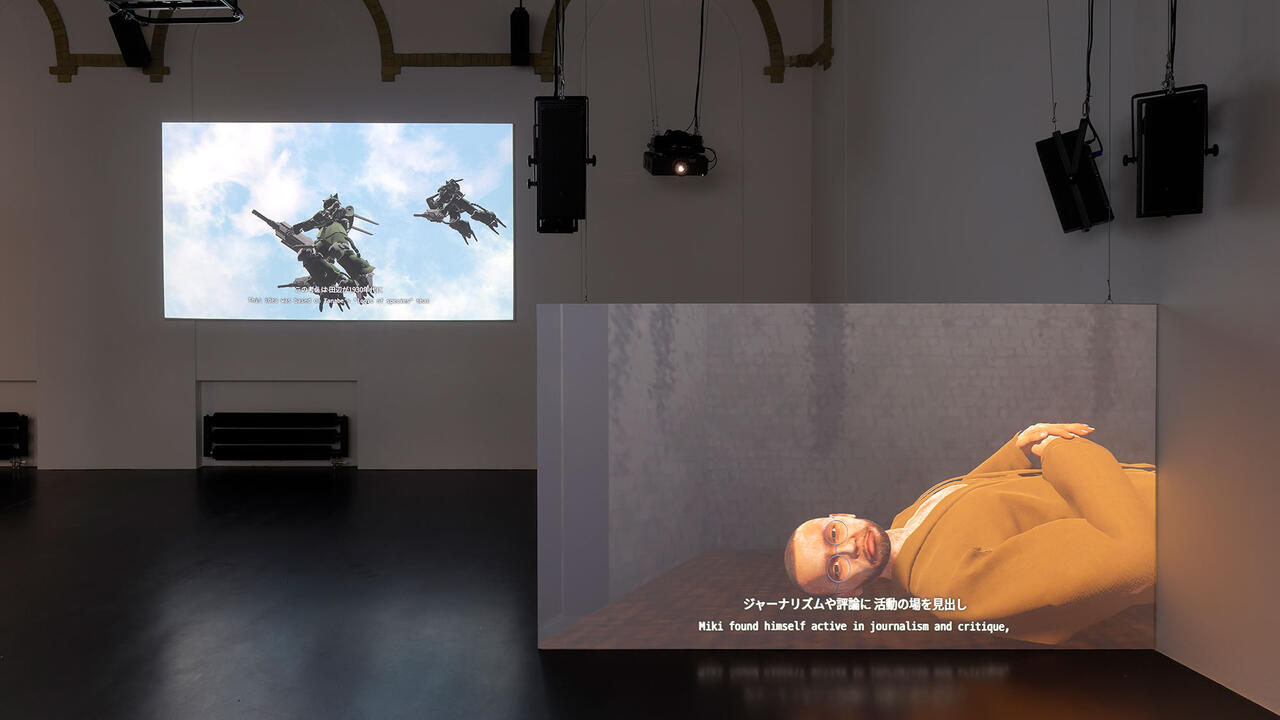Bridge Freezes Before Road
Spiral Jetty (1970) may have resurfaced, but whether younger artists currently claiming Robert Smithson as a hero understand his work sometimes seems questionable. ‘Bridge Freezes Before Road’, an erratic but exciting show curated by critic Neville Wakefield, managed to draw some convincing parallels between new works and ones from past decades – including a Smithson non-site photo-collage – while conjuring a sense of absurd menace that effectively distils the present moment.
The latter was borne out not only by works from a new generation but also by several from older artists, notably Chris Burden’s classic shaggy-dog video Big Wrench (1980), an ode to a big truck and a streak of very bad luck, which established the predominant tone of toxic, macho but impotent Americana. Newcomer Nate Lowman’s Bullet Holes (2005), Benday dot images silk-screened on metal pieces stuck to the gallery’s façade like the comic-book remains of a gangland drive-by shooting, immediately signalled a sense of creeping unease.
Several works were sardonically topical. Matthew Day Jackson’s Tomb of the Unknown (2004), comprising three crisscrossing I-beam supports recalling anti-tank barricades plucked from some combat zone, served as perches for carved wooden vultures and suggested an aptly corrosive memorial to the war of attrition in Iraq. Adam Helms’ drawings of fictional guerrillas were matter-of-factly nightmarish, while Aaron Young’s video Freedom Fries (2005), made by kicking a camera around the pristine geometric gardens of Versailles, made an effective bit of metaphorical vandalism. But overt political references were less sinister than the contamination of formal rigour by media spectacle in other works: a Cinemascope-proportioned painting depicting a military plane banking towards a fiery sun in a sooty sky by Jack Goldstein, that purveyor of the paranoid sublime; a lushly coloured resin-coated plank leaning against a wall by Pop mystic and alien enthusiast John McCracken; and horror-meister Clive Barker’s aluminium dartboard, a bit of grim, late 1960s’ kitsch. These works surrounded Banks Violette and Stephen O’Malley’s installation bleed (2005), comprising slickly glam black shards of painted plywood piled like colliding ice floes between salt-rimmed loudspeakers that produced the occasional spooky sound.
Female experience was in conspicuously short supply in this aggressively male, testosterone-laden show. Certainly work by more than the three women artists included would have suited Wakefield’s vision of an apocalyptic road trip strewn with banalities. (Lali Chetwynd’s images of bats and ghouls seemed out of place, suggesting that the art world’s Goth moment may be running out of steam.) Why not, say, throw in a Cady Noland? Instead, the show’s preoccupation with masculinity was confirmed by Slater Bradley’s Year of the Doppelganger (2005), a video of a slender bare-chested youth beating away at a drum kit in an astroturfed stadium while a beefy football team does drills in the background: ‘smells like team spirit’ indeed. In this light Richard Prince’s absence also seemed at first glance mystifying; but he was tangibly present in two pieces, including The Final Curtain (2005), a doorway screen composed of hanging aluminium beer and soda cans credited to one John Dogg, a fictional artist reportedly dreamt up by Prince and the late irreplaceably subversive gallerist Colin de Land back in the 1980s. Final Curtain’s calculated deadpan idiocy in reinventing a hippie staple – the beaded curtain – in trash bluntly echoes the demise of the Utopian dreams of the 1960s and ’70s.
And those dreams died again in more ways than one. Dan Colen’s wooden graffitied hideout containing scrupulously handcrafted nappies, boom box, tyre and giant beetle, was a tour de force of puerile squalor. Some artists’ work looked better in this context than elsewhere; for example, in his last solo show Adam McEwen’s work seemed sophomoric, but here his two intimate scatological scenes with captions alluding to the ‘War on Terror’, together with Kelley Walker’s images of Civil Rights–era violence sullied with splattered chocolate and milk, memorably fused political helplessness with personal shame (the latter conflating Warhol’s own race riot silk screens and later ‘piss paintings’).
In an accompanying essay Wakefield offers clues to his particular linkage of artistic icons of the past with new arrivals – macho or otherwise – when he calls Smithson ‘a man who spent considerable time in stoned reflection’. It’s worth remembering the loose, trippy character of the artist’s writings and his interest in irrationality, alongside the elegant clarity of his central ideas. The entropy that tugs at much of the tough-guy art in ‘Bridge Freezes before Road’ is clearly more psychic than physical or Conceptual, the terrain it maps out laced with anxiety and potential oblivion. The blobby rock in Andrea Zittel’s four Point of Interest drawings (1998) not only suggests commodified leisure but is also precisely the kind of mundane object that becomes fascinating when one is high. All this probably leads nowhere. But that was, in a way, the point, and in summoning the darker side of eras past it left behind a sense of collapsed time that Smithson would have appreciated.
















